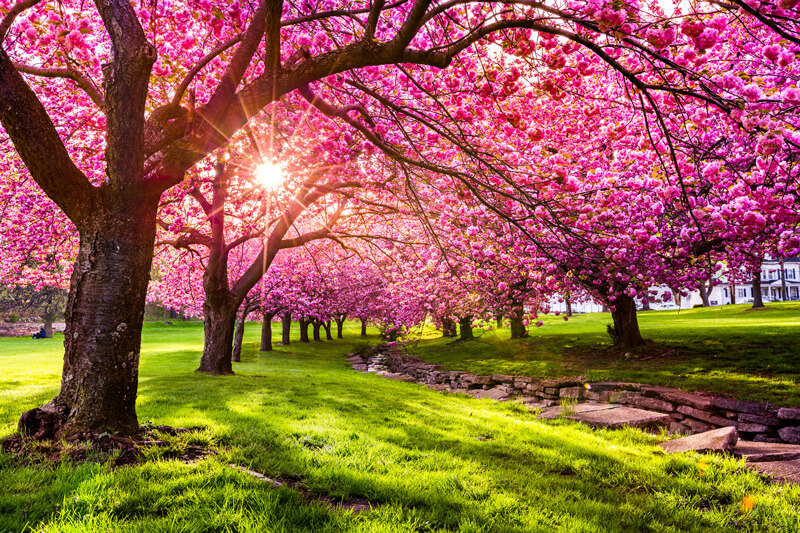This blog lists a variety of exotic tree specimens including palm, flowering, and fruit. It was originally written in April 2018 and then updated in June 2021 to include more information.
When we think of exotic trees our thoughts turn to warm climates or tropical islands. Think of the lush green and brilliant flowers seen in Hawaii or some of our southern States.
The truth is that exotic and specimen trees can also thrive in the New Jersey climate. There are many striking plantings you can add to your garden or commercial property today that will flourish and transform your space into an experience.
Here’s a sampling of the best exotic and specimen trees for your New Jersey landscape.
Exotic Trees for Display
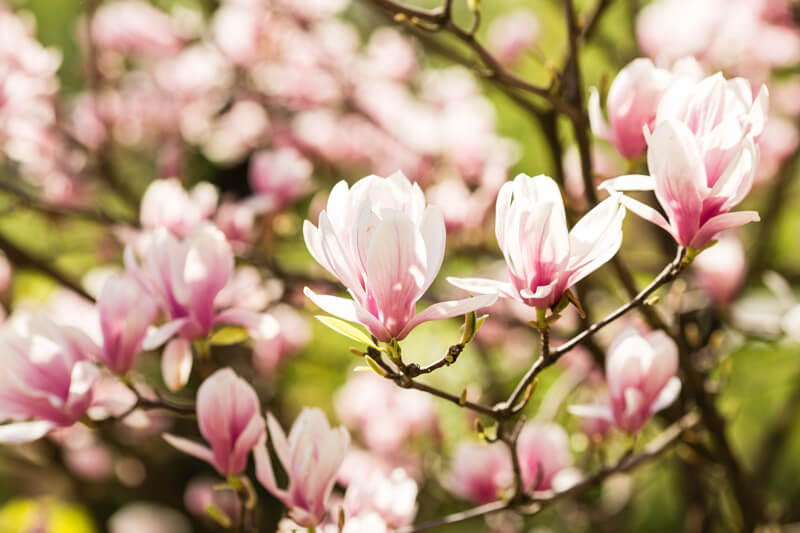
Magnolia
Known most famously as the state tree of Mississippi, the magnolia tree is a flowering beauty. And even though it may be reminiscent of the south, it will grow perfectly in your New Jersey landscape.
There are many varieties of the magnolia plant. Consider Magnolia grandiflora (southern magnolia) as a focal point for your garden.
With its dark glossy green leaves and creamy white flowers, known for their aromatic perfume, this tree will be a desirable addition to your property.
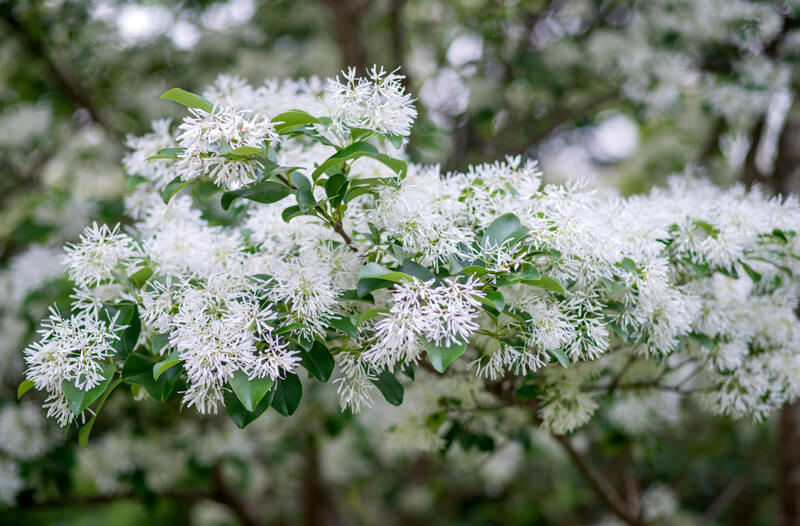
White Fringe Tree
This is an example of a tree that is not just unique but also native to the United States. It enjoys full sun, or part shade and will grow up to 20 feet tall.
Train it to grow as a single trunk or multi-stemmed depending on the look you wish to achieve.
The White Fringe goes through many phases throughout the seasons. In late spring it simultaneously brings forth its leaves and abundant white fragrant blossoms.
These give way to clusters of olive-like fruits which ripen to a dark navy blue in late summer. During the fall, this tree brings a shower of golden leaves.
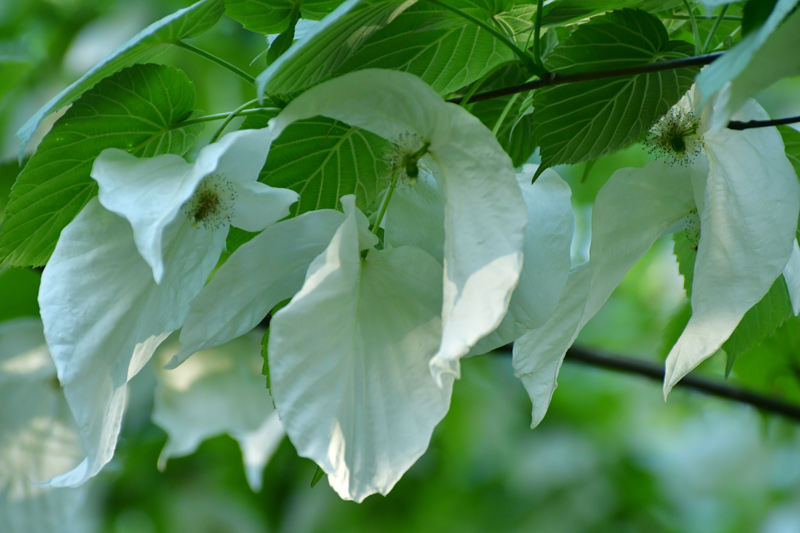
Dove Tree or Handkerchief Tree Davidia
Considered by many as the holy grail of exotic specimens, this tree is sure to please.
The dove tree is most noted for its delicate white flowers. Although the size of its blossoms depends on the variety.
Like magnolias, these trees add a spectacular show to any landscape design. Particularly since as the tree ages, the bark turns orange-brown to add even more interest.
Check out the sought-after Sonoma variety which flowers earlier in the spring, blooms larger flowers, and has increased hardiness.
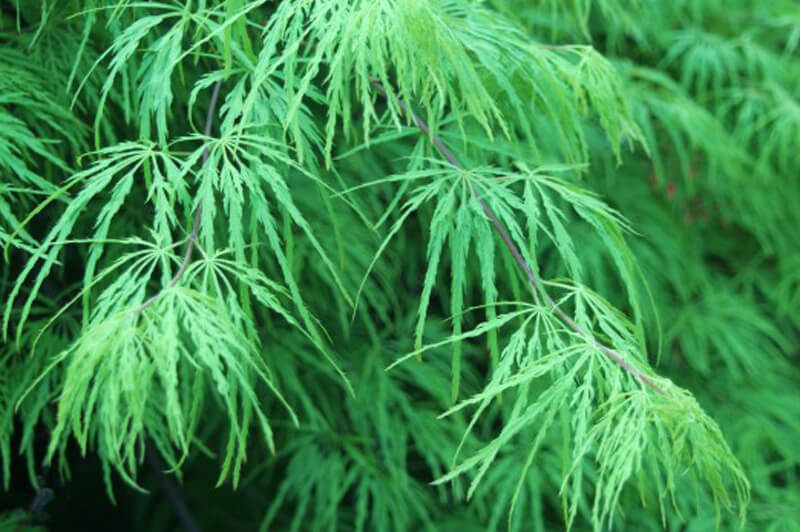
Threadleaf Japanese Maple
This low-lying deciduous tree adds magnificent color to any landscape. The changing deep colors of purple, red, green, and orange add a rainbow effect that is second to none.
The fern-like leaves produce small red flowers mid-spring. Long red ornamental branches add depth to its leafy foliage.
The Threadleaf Japanese maple grows best in moderate sunlight and can reach 8 feet in height.
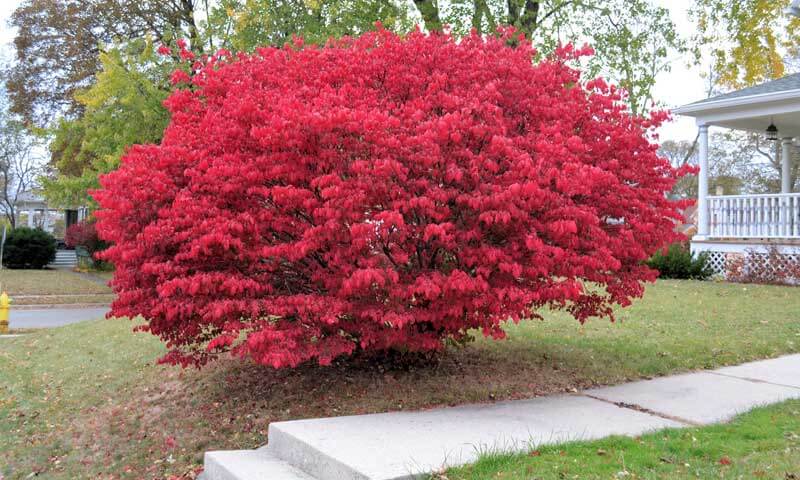
Dwarf-Winged Burning Bush
The dwarf-winged burning bush is a shrub that packs a punch. Although it’s not actually a tree, it made the list because it can grow to about 4 feet tall. And it’s a really cool specimen.
The burning bush is named because its leaves turn bright pink during fall. And although it remains green most of the time, its color-changing ability gives it excellent ornamental value.
It is not native to New Jersey or any part of North America. However, it does very well in any soil and requires little maintenance.
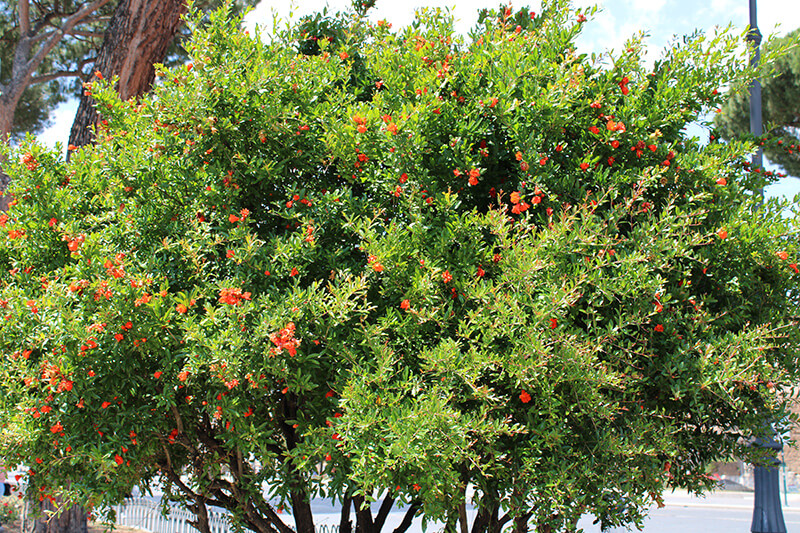
Russian 26 Cold Hardy Pomegranate
The Russian 26 Pomegranate originated from Russia in the early 20th Century. It is a species of pomegranate that has cold hardiness. For this reason, it grows well in most parts of New Jersey.
Russian 26 Pomegranate produces beautiful orange flowers and fruits. The appearance of both flowers and fruits adds a bright glow to any property.
Maintenance required for this specimen includes pruning if you want it to grow as a tree as opposed to a shrub.
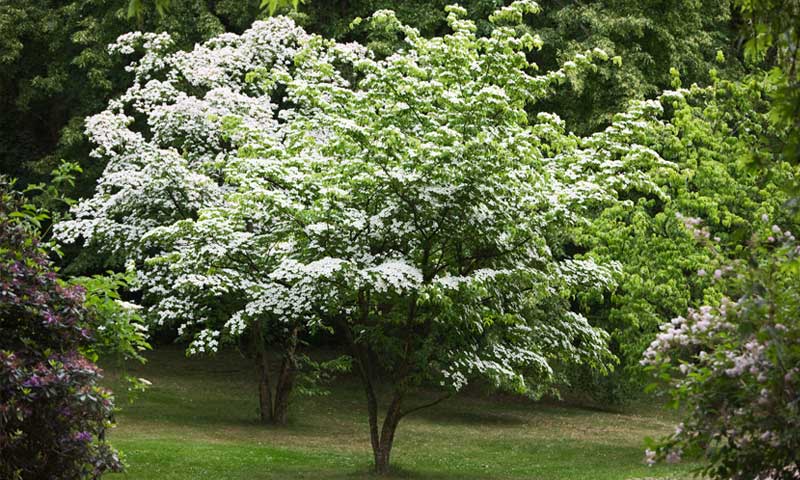
Kousa Dogwood
Kousa dogwood (Cornus cousa) is similar to the flowering dogwood and is native to Asia. This tree can grow up to 30 feet (9.14 m) in height with long leaves.
It produces edible berry-like fruits that turn pink or reddish when ripe. It is most widely known for its delicate beauty and soft white flowers.
Kousa dogwood requires soil that has good drainage to thrive. These specimens will live between 50 and 150 years.
Maintenance must involve pruning since it can grow into a thick shrub due to its many stems.
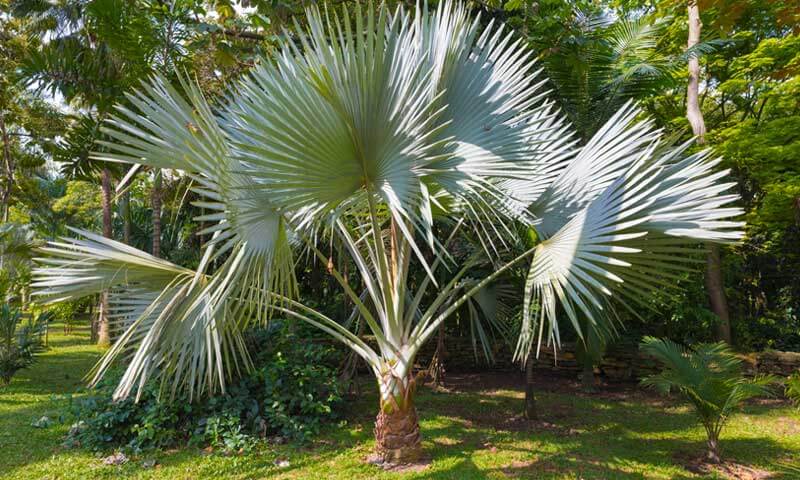
Palm Tree Varieties
What could be more exotic in the northern New Jersey climate than having a palm tree in your landscape?
There are a few varieties of palm trees that will love the summer sun but are extremely cold hardy as well. The Windmill Palm and Sabal Minor (or Dwarf Palmetto) are two such examples.
Both offer frond-like fanning leaves, and the Sabal also bears yellow flowers.
Easy to grow in a variety of soils these palms can be built into a landscape with other plants or be very splashy on their own.
Just don’t forget to protect your new plant from frost for the first few years. Provide some type of insulating ground cover from the first frost until spring and there is no reason you can’t have a tropical paradise in New Jersey!
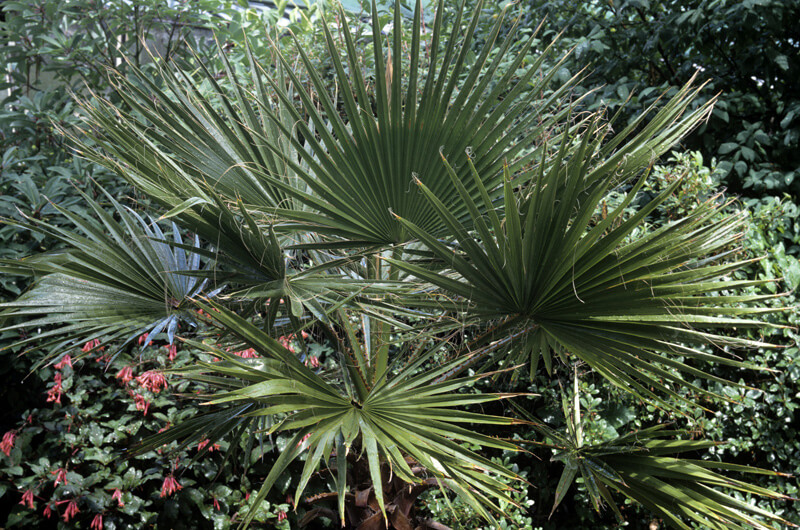
Chinese Windmill Palm Tree
These hearty broad crowned frond palm trees do quite well in the New Jersey climate. They grow to an average height of around 15 feet tall.
With some guidance from your landscape professional, there is no reason that you can’t add this little taste of the tropics to your landscape package.
Perhaps the main drawback to the Chinese Windmill Palm would be that it is a bit pricey. Expect to pay around $1,500 for one of these tropical trees.
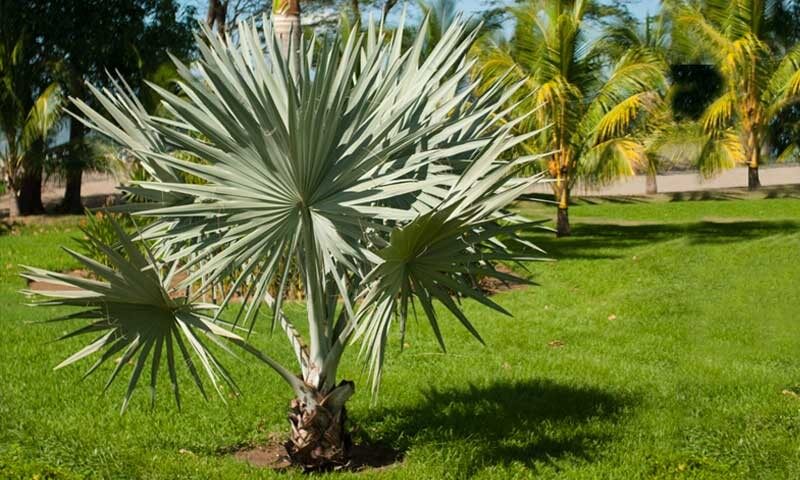
Dwarf Palmetto Palm Tree
These palm trees as well as quite a few others began to migrate from the tropics in 1849. Robert Fortune, a British botanist, is said to have smuggled them into The Royal British Gardens along with an ocean liner headed to New York.
The Dwarf Palmetto is considered an ornamental palm and is a compact tree coming in at four feet tall.
It is an affordable option that still gives an impressive feel, and it blooms with flowers.
Exotic Fruit and Nut Trees
Fruit Trees
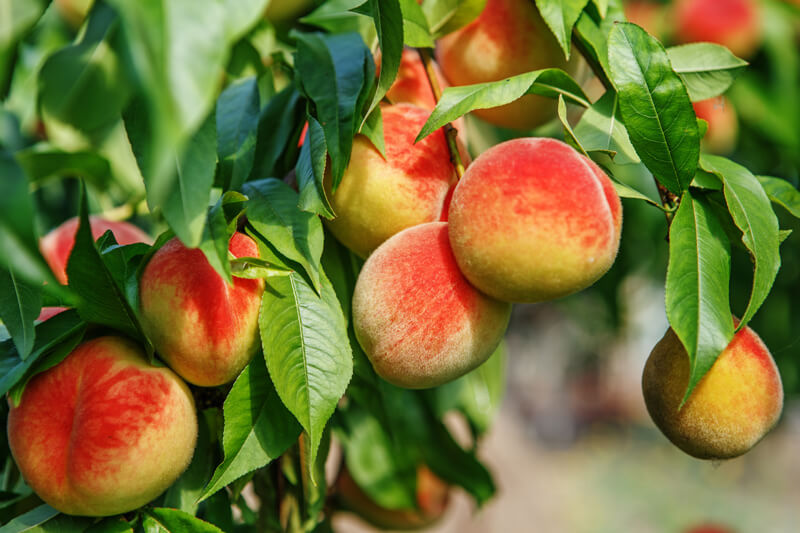
- Cherry – sweet, sour, and fruiting cherries can be grown
- Apple – at least two trees must be grown together for pollination
- Peach – a popular tree for agricultural sales
- Apricot – produces a hardy, sweet fruit
Nut Trees
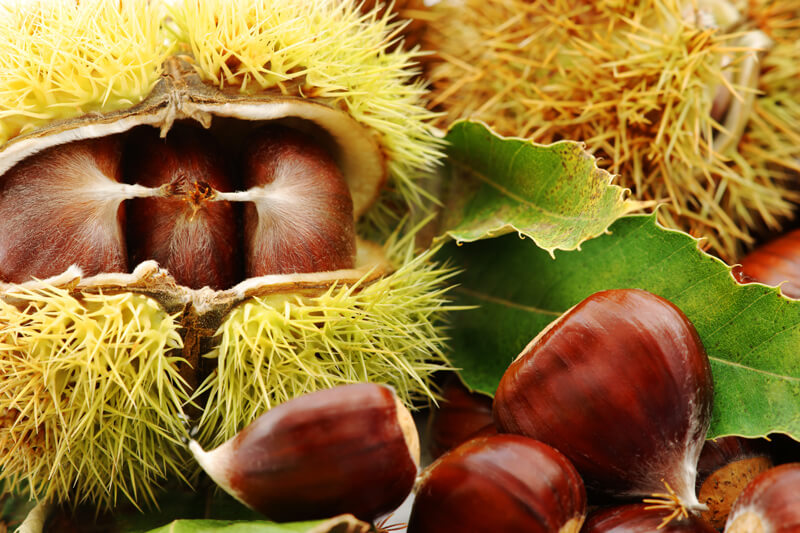
- American Black Walnut – a large crop is produced in the first year of growth
- American Chestnut – produces a large crop that is resistant to blight
- Northern Pecan – adapts well to the temperatures of New Jersey
- American Filbert Tree – abundant crop of hazelnuts
A New Jersey Specimen – BONUS!
Tulip Tree
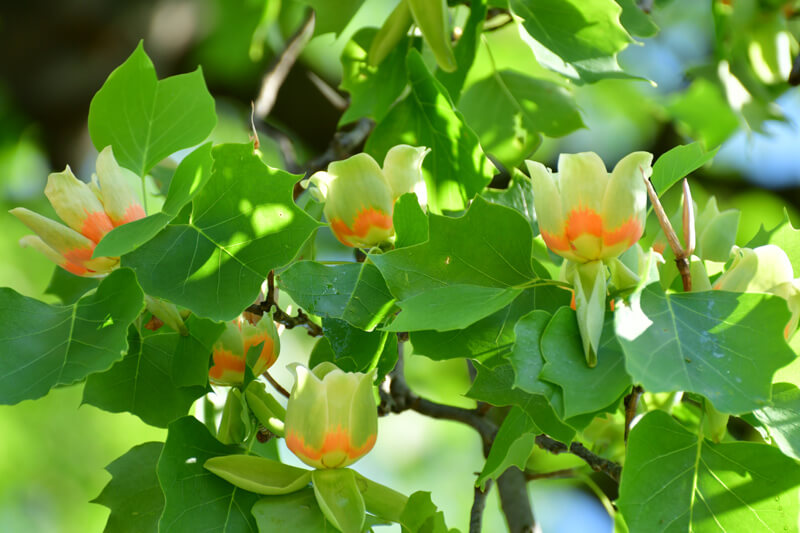
Here is a tree that is native to New Jersey yet has an exotic look and should not be discounted. This fast-growing tree is unique because of its fragrant cone-like flowers and the shape of its leaves.
It’s a tree that is noticeable all year long with bright yellow leaves in fall and flowering blossoms in spring. Perfect for bringing attention to an area of your landscape design.
As you consider new plants to enhance your landscape this year, bring on a little of the exotic. It will add a uniqueness that you will enjoy for years to come.
For more information about tree care and landscape design contact us today!

